#opv! cross
Text
It’s not just the spike protein and the mRNA that are a problem. Both Pfizer and Moderna covid injections also have DNA contamination and Pfizer’s covid injection contains SV40 promoters.
Microbiologist Kevin McKernan pioneered research on testing some of the COVID-19 vaccine vials and discovered unacceptable levels of double-stranded DNA plasmids floating around. This is DNA contamination. He found the contamination in Pfizer and Moderna vials.
During an interview with Peter Sweden, Sasha Latypova said that DNA contamination is “a huge problem because this is replication competent plasmid, it can then invade human cells, it can invade the bacterial cells that live in your gut. So, they go into the bacteria they replicate there, they replicate antibiotic-resistant genes…it can cause sepsis, it can cause cancer, all sorts of issues.”
The World Council for Health (“WCH”) stated that a red line has been crossed. “DNA contamination of mRNA ‘vaccines’ poses a risk to everyone on the planet,” WCH said. “Replicable DNA, so-called plasmids, in both the monovalent and bivalent vaccines, which should not be there at all … We can only speculate how it will end, but what needs to happen today after the publication of the paper by McKernan et al (2023) is an immediate stop of the ‘covid-19 vaccine’ program.”
In Pfizer’s mRNA injection, McKernan also discovered Simian Virus 40 (“SV40”) promoters which are tied to cancer development in humans. He emphasised that the SV40 found is a viral piece, it is not the whole virus. However, it still presents a risk of driving cancer.
SV40 or Simian Virus 40 was the 40th virus found in rhesus monkey kidney cells when these cells were used to make the polio vaccine. This virus contaminated both the inactivated polio vaccine (“IPV”) and the oral or “live” polio vaccine (“OPV”) developed by Dr. Albert Sabin. When it was discovered that SV40 was an animal carcinogen that had found its way into the polio vaccines, a federal law was passed in 1961 that required that no vaccines contain this virus.
Kanekoa The Great tweeted two audio/video transcripts. One of a recent interview with McKernan explaining his discoveries and another of a Japanese professor expressing his concerns about these discoveries. We have republished these transcripts below.
50 notes
·
View notes
Text
Top 15 Metal Albums of 2022
(This is in order of release this year. Otherwise, I love them all the same.)

Synchro Anarchy by Voivod

This World is Going to Ruin You by Vein.fm

Ecstasies of Never-Ending Night by Devil Master

Rashomon by Ibaraki
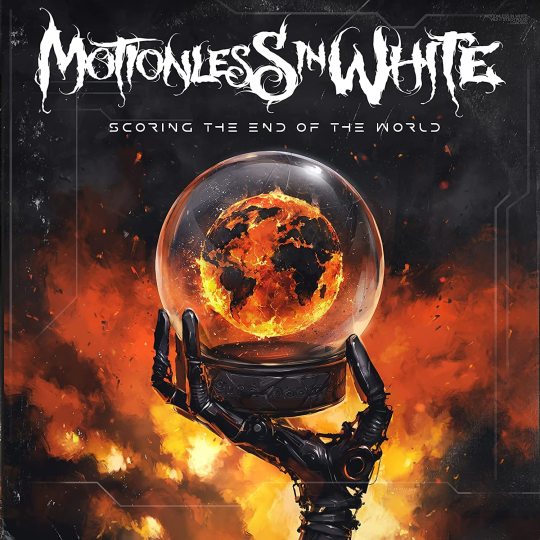
Scoring The End of The World by Motionless in White

Electrified Brain by Municipal Waste

Nonnegative by coldrain

The DREGGMUSIC Mixtape by DREGG
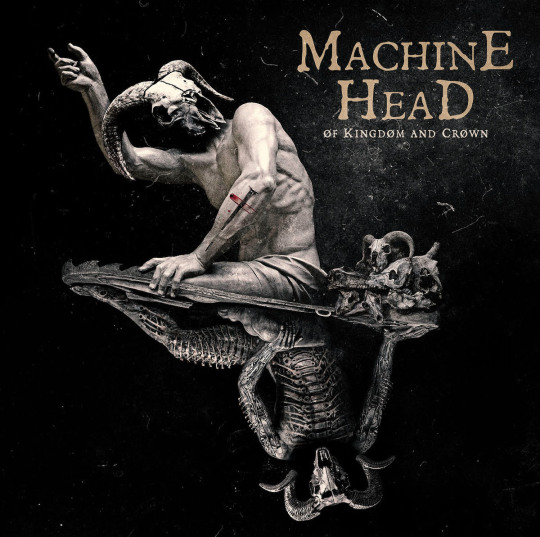
Of Kingdom and Crown by Machine Head
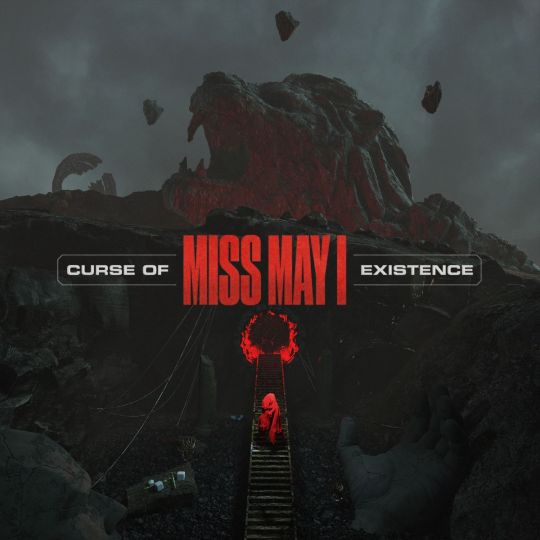
Curse of Existence by Miss May I
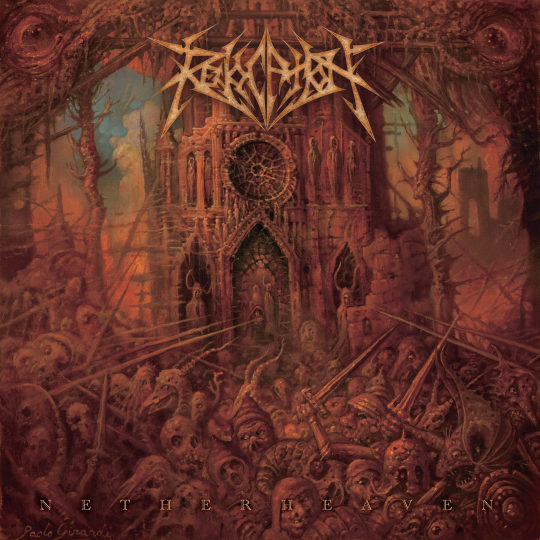
Netherheaven by Revocation

Patient Number 9 by Ozzy Osbourne
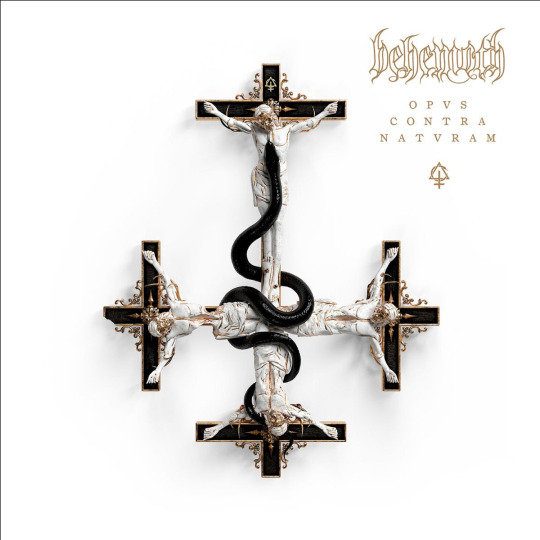
Opvs Contra Natvram by Behemoth

The End, So Far by Slipknot
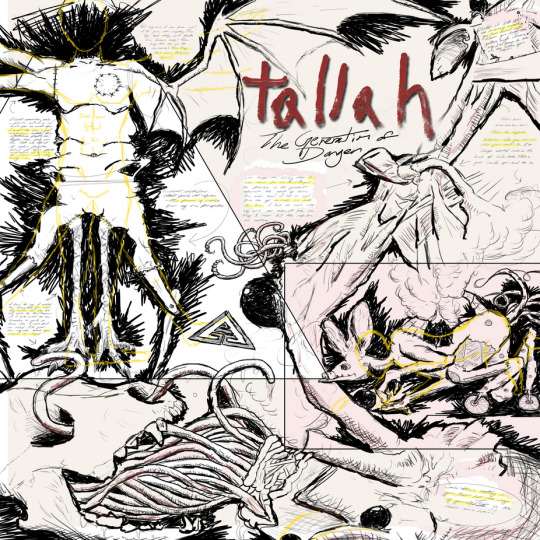
The Generation of Danger by Tallah
Runners-Up:
(Not quite as good as the main entries, but still worth mentioning.)

Voyeurist by Underoath

Requiem by Korn
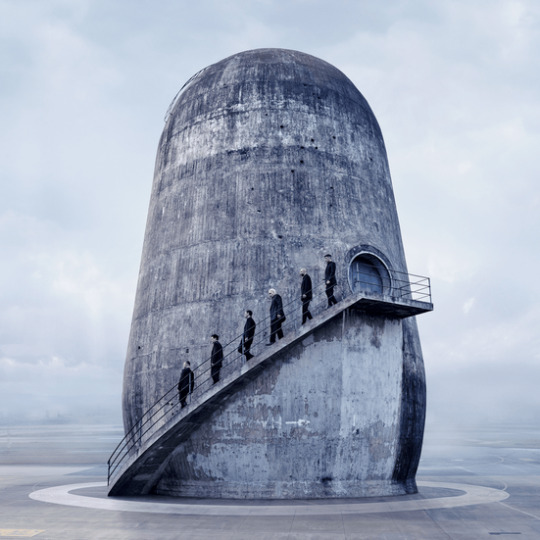
Zeit by Rammstein

Break and Cross the Walls II by Man With a Mission

The Sick, The Dying...and The Dead! by Megadeth
#metal#Voivod#Vein.fm#Devil Master#Ibaraki#Motionless in White#Municipal Waste#coldrain#DREGG#Machine Head#Miss May I#Revocation#Ozzy Osbourne#Behemoth#Slipknot#Tallah#Underoath#Korn#Rammstein#Man With a Mission#Megadeth
10 notes
·
View notes
Text
⊰ HEADCANON ⊱ ◦ TRAJECTORY OF CORRODED COFFIN
I wanted to make a couple verses for CC, one that follows the proper timeline of ST and another set in the modern era, SO HERE WE ARE WITH THIS DOOZY OF A HEADCANON that’s been festering in my brain. As mentioned briefly in this post HERE, they do eventually become the ST universe’s rendition of the band Ghost, just without the lawsuit and ended friendships.
Throughout middle and high school, Corroded Coffin started as a typical metal band of the 80s with a heavy focus on horror. They did covers of their favorite bands, like Bathory and Venom, and sung funky tunes about death, film references, witches, etc. However, after the events of season 4, the shift in tune suddenly changed.
With the traumas of the witch-hunt still lingering and the Satanic Panic still on the rise, Corroded Coffin took it upon themselves to immerse themselves in the world people claimed they were already in. After a brief hiatus to decide where exactly they wanted to take it, they became a fictional Satanic cult, crafting a lore of nameless ghouls and an anti-pope character who changed with every album (despite it just being Eddie in a new costume each time). While their new shift starts off heavy in cliches and tropes, with a smattering of wicked Latin phrases throughout, they eventually become more perverse and tongue-in-cheek in order to poke fun at the extreme hypocrisy of many who follow Christianity and Catholicism.
After several shows, the band realizes that they want more theatrics and more from their frontman; that it’ll be a funner way to convey their message. Even though Eddie loves playing lead guitar, he gives it up to focus purely on vocals and the character he now plays. As his replacement, at least in my MAIN focus for this band, Robbie ( @sentinel007 ) comes in to play lead guitar. They eventually seek out a keyboardist to tie up loose ends and make it feel more evil. While all the members, aside from Eddie (who goes by Papa Emeritus, with II, III, etc. following the name with each album), go under the term Nameless Ghouls, each member is given an alchemical element with lore stating they received their elements from Satan himself. Gareth is the Earth Ghoul, Jeff is the Water Ghoul, Mitch is the Aether Ghoul, Robbie is the Fire Ghoul, and their keyboardist is the Air Ghoul. Fans also affectionately refer to Robbie as Alpha and Mitch as Omega sometimes.
Within a year’s time, they’re ready to be signed to an underground label. The name Corroded Coffin is dropped in favor of DES CULTES (French for The Cult). Their first album is an immediate underground success, and as time goes on, their fame only exceeds the expectations they had of themselves. By their third album, they’ve hit the rock / metal Billboard and are nominated for multiple high-ranking awards, even earning a few. It’s when their fifth album drops that they’ve crashed through the rock / metal label and landed right onto the Billboard chart proper, and have earned two Grammy awards; one for best Rock Album and one for Best Metal Performance.
SONG EXAMPLES FROM EVERY ALBUM;
(I had so many in mind for this, but I’m sticking to three per album, plus three singles. All links head to the song page on Spotify.)
ERA 1 - ❛ OPVS EPONYMOVS ❜ : Con Clavi Con Dio // Prime Mover // Ritual
ERA 2 - ❛ INFESTISSUMAM ❜ : Jigolo Har Megiddo // Monstrance Clock // Year Zero
ERA 3 - ❛ MELIORA ❜ : Cirice // Mummy Dust // Spirit
ERA 4 - ❛ PREQUELLE ❜ : Dance Macabre // Pro Memoria // Rats
ERA 5 - ❛ IMPERA ❜ : Call Me Little Sunshine // Darkness at the Heart of My Love // Spillways
SINGLES THROUGHOUT: Kiss the Go-Goat // Mary On A Cross // Square Hammer
#▓ ▌ ⊰ HEADCANON ⊱ ◦ this wretched mischief is now coursing through your soul.#[[ everything ghost and t.f. is just... eddie for me. ]]
5 notes
·
View notes
Text
Fémjelzés – a hét újdonságai (2023. november 6-12.)
Fémjelzés – a hét újdonságai (2023. november 6-12.) - https://metalindex.hu/2023/11/13/femjelzes-a-het-ujdonsagai-2023-november-6-12/ -
A november második hetében született underground porontyok listája ezúttal is száznál több lemezt kínál böngészésre.
Acid Throne – Kingdom’s Death (stoner/sludge/doom metal)
Adventum Diaboli – Mørke (black metal)
Æolian – Echoes of The Future (melodikus death metal)
Aglo – Build Fear (death/doom metal)
Ammonium – Erased Existence (death metal)
Ancestro – Tierra desangrada (thrash metal/hardcore)
Athiria – Conjure the Beast (death metal)
Belialed – Beyond Resigned (melodikus black metal)
Burn Ritual – Grave Watcher (stoner/doom metal)
Catch the Giant! – Midnight Tales Pt. I: Nighttime (power/heavy metal/hard rock)
Cold Eternity – Space Wanderer (progresszív metal)
Collapsed Mainframe – Theater of Tyranny (doom/death metal/blackened grindcore)
Cranio – 11:11 (heavy metal/hard rock)
Crescendium – Within (progresszív/melodikus death metal)
Cydron – Timewarrior (black metal)
Desynchronized – Existential Nothingness (death metal)
Dilim – Lagim (black metal/dungeon synth)
Dissona – Dreadfully Distinct (EP) (avantgárd/progresszív metal)
Diviner – Avaton (heavy metal)
Drowning in Formaldehyde – Nightmares and Seroquel (slam/brutális death metal)
Dry and Shattered – Systemic Turpitudes (death metal/hardcore)
Empire of Disease – Shadows in the Abyss (metalcore/melodikus death metal)
Extinkt – Trinity Redux (thrash metal)
Fallen Utopia – Ruin (death metal)
Fog Warrior – Of Strength and Sadness (atmoszferikus black metal)
Fog Warrior – Ruined (atmoszferikus black metal)
Gama Bomb – Bats (thrash metal)
Halvar – State of the Nation (death/thrash metal)
Hard Excess – The Nations Dust (heavy metal/hard rock)
Helmet – Left (heavy/groove metal/alternatív rock)
Hinayana – Shatter and Fall (melodikus death/doom metal)
Hubris Debris – Reclamation (metalcore/groove metal)
Hypaethral – Hypaethral (technikás death metal)
Inmisericorde – Alquimia de sombras (death metal/hardcore/grindcore)
Innominate – Foreboding (death metal)
Isometry – Break the Loop (progresszív metal)
Ivann – Eternal Decomposition (death/thrash metal)
Katrofy – A Velha Estrada (black metal)
Krahnholm – Конец трагедий (atmoszferikus black metal)
Krakh – Strangeled Hope (atmoszferikus/post-black metal)
Kungagraven – Hassjäger und nackte Percht (black metal)
Left Cross – Upon Desecrated Altars (death metal)
Left Eye Perspective – Conundrum (progresszív/stoner metal)
Lodestar – Polaris (doom metal/rock)
Lord Kinbote – Calm like Castle Bravo (stoner metal/grunge)
Luminous Path – The Dark Path to Enlightenment (nyers black metal)
Luvart – Until the Void (black metal)
Marsh of Swans – Heartwood (atmoszferikus post-black metal)
Mephorash – Krystl-Ah (black metal)
Metal Life Crisis – Theatre of Fire (heavy/progresszív metal)
Mindead – Breathing Fire (groove/thrash metal)
Morildraugen – Desolate (black metal/dungeon synth)
Mørkdryad – Cold Possession (black metal)
New Skies – The Legacy of Avelore (progresszív/szimfonikus power metal)
Night Crowned – Tales (melodikus black/death metal)
Niphredil – The Final Star (atmoszferikus black/doom metal)
No Man Eyes – Harness the Sun (heavy metal)
Northern Eye – Under Siege (doom/gótikus metal)
Odd Crew – Dark Matters Part II (groove/alternatív metal)
Okrütnik – Krwawy pontyfikat (heavy/speed/black metal)
Opvs Nostri – Velas Negras Sobre o Altar da Morte (black metal)
Passage – Oblique (post-rock)
Perilous Grave – Soilsiú (szimfonikus black metal)
Phantom Winter – Her Cold Materials (sludge metal)
Phorceps – License to think (heavy metal)
Plague Rider – Intensities (experimental/technikás death metal)
Pyreficativm – K’aahz Menoh (black metal/dark ambient)
Pyrolatrous – Inveterate (blackened melodikus death metal)
Rascal – Lost Beyond Reason (heavy/power/speed metal)
Rigorious – Night of Retribution (power metal)
Roman Master – Death (black metal/ambient)
Sanctum Sathanas – Into the Eternal Satanic Damnation (black metal)
Sangre Maldita – Alma negra (gótikus/death metal)
Sâver – From Ember and Rust (sludge/post-metal)
Secret Sphere – Blackened Heartbeat (melodikus power/progresszív metal)
Shylmagoghnar – Convergence (progresszív/melodikus death/black metal)
Sodom – 1982 (EP) (thrash metal)
Sons of Sounds – Seven (progresszív metal)
Spectral Spectrum – Scary Stories to Tell in the Dark (black/heavy metal)
Stargate – Escaping the Illusion (heavy/power metal)
Stille Volk – Le Dieu D’automne (középkori/kelta folk)
Stögö – Vampyre Gods (heavy metal/synthwave)
Sutratma – Images Beyond the Self (funeral doom/death metal)
Sutratma – Realms of Eternal Immolation (funeral doom/death metal)
Swarzo – The War You Sought (szimfonikus/power metal)
Tarja – Dark Christmas (szimfonikus metal/rock)
Temple Balls – Avalanche (melodikus heavy metal/hard rock)
The Color of Rain – Oceans Above (progresszív/post-black metal)
The Neologist – Between the Darkness and the Fade (melodikus death metal)
The Ritual Aura – Heresiarch (technikás death metal)
Ulvdalir – Ancient Throne of Unholy Ingria (black metal)
Under a Spell – Freya (heavy metal)
Uvikra – Comfort… (progresszív rock/metal)
Varamus – Luminous Affliction (melodikus/technikás death metal)
Vastum – Inward to Gethsemane (death metal)
Venomous Agent X – The War Will Feed Itself (death/black metal)
Verilehto – Kuoleman siipien havina (black metal)
Vestígio – Vestígios (black metal)
Voracious – Path to Death (death metal/hardcore)
WarBand – OverAmped (thrash metal/punk)
Wastelander – Endless Survival (black/thrash metal/crust)
Weightless World – Sleepwalker (progresszív metal/metalcore)
Welcome to Pleshiwar – Apostasy (melodikus doom/death metal)
0 notes
Text
Safeguarding the Seas: Exploring the Offshore Patrol Vessels Market
Introduction: Offshore patrol vessels Market play a vital role in maritime security, law enforcement, and surveillance operations in coastal and offshore regions. These versatile naval vessels are designed to perform a wide range of tasks, including border control, anti-piracy operations, fisheries protection, search and rescue missions, and environmental monitoring. This blog dives into the dynamic market of offshore patrol vessels, highlighting their significance, key segments, market trends, and future prospects.
Understanding Offshore Patrol Vessels: Offshore patrol vessels are medium-sized naval ships that are specifically designed for operations in littoral zones and offshore areas. These vessels typically range from 60 meters to 120 meters in length and are equipped with advanced sensors, communication systems, and weaponry. They serve as a cost-effective solution for maritime surveillance, interdiction, and support missions, complementing the capabilities of larger naval vessels.
Key Segments of Offshore Patrol Vessels: a) Offshore Patrol Vessels (OPVs): OPVs serve as the primary segment in the offshore patrol vessels market. These vessels are specifically designed for extended deployments and have the capability to operate in diverse maritime environments. They are equipped with surveillance systems, small- to medium-caliber weapons, and facilities to support various missions, including maritime security, law enforcement, and disaster response.
b) Inshore Patrol Vessels (IPVs): IPVs are smaller patrol vessels primarily used for operations in shallow waters and near-coastal regions. These vessels are highly maneuverable, suitable for operating in confined spaces, and often equipped with rapid-response capabilities. IPVs are particularly effective for anti-smuggling, anti-piracy, and coastal surveillance operations.
c) High-Speed Craft: High-speed craft, such as interceptors and fast patrol boats, are used for rapid response and interception missions. These vessels are characterized by their high speed, agility, and quick reaction capabilities. High-speed craft are frequently deployed for tasks such as maritime interdiction, search and rescue, and counter-terrorism operations.
Market Trends Shaping the Offshore Patrol Vessels Market: a) Enhanced Maritime Security Concerns: The increasing global focus on maritime security, border control, and protection of offshore assets has fueled the demand for offshore patrol vessels. Nations are investing in modernizing their naval capabilities to address emerging security threats, such as piracy, smuggling, terrorism, and illegal fishing.
b) Technological Advancements: The offshore patrol vessels market is witnessing significant technological advancements. These include the integration of advanced sensors, surveillance systems, unmanned aerial vehicles (UAVs), and unmanned surface vehicles (USVs) for improved situational awareness and intelligence gathering. Additionally, the incorporation of stealth technology and reduced radar cross-section enhances the vessels' stealth capabilities.
c) Multi-Mission Capabilities: Offshore patrol vessels are increasingly being designed to perform multiple missions, including humanitarian assistance and disaster relief operations. Their ability to carry out a wide range of tasks makes them versatile assets for governments and naval forces, enabling cost-effective operations in diverse scenarios.
d) Focus on Fuel Efficiency and Environmental Sustainability: With growing concerns about environmental impact, there is a push for greener and more fuel-efficient offshore patrol vessels. This has led to the adoption of hybrid propulsion systems, LNG (liquefied natural gas) propulsion, and the exploration of alternative fuels to reduce carbon emissions and operational costs.
Future Prospects: a) Growing Demand for Exclusive Economic Zone (EEZ) Protection: The expansion of offshore activities, including offshore energy installations, fisheries, and underwater resources exploration, drives the need for effective EEZ protection. Offshore patrol vessels will play a crucial role in safeguarding these zones and enforcing
0 notes
Text
『•• headcanon 03 ... eddie ••』
⤷ trajectory of corroded coffin
Throughout middle and high school, Corroded Coffin started as a typical metal band of the 80s with a heavy focus on horror. They did covers of their favorite bands, like Bathory and Venom, and sung funky tunes about death, film references, witches, etc. However, after the events of season 4, the shift in tune suddenly changed.
With the traumas of the witch-hunt still lingering and the Satanic Panic still on the rise, Corroded Coffin took it upon themselves to immerse themselves in the world people claimed they were already in. After a brief hiatus to decide where exactly they wanted to take it, they became a fictional Satanic cult, crafting a lore of nameless ghouls and an anti-pope character who changed with every album (despite it just being Eddie in a new costume each time). While their new shift starts off heavy in cliches and tropes, with a smattering of wicked Latin phrases throughout, they eventually become more perverse and tongue-in-cheek in order to poke fun at the extreme hypocrisy of many who follow Christianity and Catholicism.
After several shows, the band realizes that they want more theatrics and more from their frontman; that it’ll be a funner way to convey their message. Even though Eddie loves playing lead guitar, he gives it up to focus purely on vocals and the character he now plays. As his replacement, at least in my MAIN focus for this band, Robbie ( @sentinel007 ) comes in to play lead guitar. They eventually seek out a keyboardist to tie up loose ends and make it feel more evil. While all the members, aside from Eddie (who goes by Papa Emeritus, with II, III, etc. following the name with each album), go under the term Nameless Ghouls, each member is given an alchemical element with lore stating they received their elements from Satan himself. Gareth is the Earth Ghoul, Jeff is the Water Ghoul, Mitch is the Aether Ghoul, Robbie is the Fire Ghoul, and their keyboardist is the Air Ghoul. Fans also affectionately refer to Robbie as Alpha and Mitch as Omega sometimes.
Within a year’s time, they’re ready to be signed to an underground label. The name Corroded Coffin is dropped in favor of DES CULTES (French for The Cult). Their first album is an immediate underground success, and as time goes on, their fame only exceeds the expectations they had of themselves. By their third album, they’ve hit the rock / metal Billboard and are nominated for multiple high-ranking awards, even earning a few. It’s when their fifth album drops that they’ve crashed through the rock / metal label and landed right onto the Billboard chart proper, and have earned two Grammy awards; one for best Rock Album and one for Best Metal Performance.
SONG EXAMPLES FROM EVERY ALBUM;
(I had so many in mind for this, but I’m sticking to three per album, plus three singles. All links head to the song page on Spotify.)
ERA 1 - ❛ OPVS EPONYMOVS ❜ : CON CLAVI CON DIO // PRIME MOVER // RITUAL
ERA 2 - ❛ INFESTISSUMAM ❜ : JIGOLO HAR MEGIDDO // MONSTRANCE CLOCK // YEAR ZERO
ERA 3 - ❛ MELIORA ❜ : CIRICE // MUMMY DUST // SPIRIT
ERA 4 - ❛ PREQUELLE ❜ : DANCE MACABRE // PRO MEMORIA // RATS
ERA 5 - ❛ IMPERA ❜ : CALL ME LITTLE SUNSHINE // DARKNESS AT THE HEART OF MY LOVE // SPILLWAYS
SINGLES THROUGHOUT: KISS THE GO-GOAT // MARY ON A CROSS // SQUARE HAMMER
#osculumobscenum • eddie#osculumobscenum • headcanon#[[ aheehee ahaha ahoho can anyone tell why i chose this url? ]]
1 note
·
View note
Text
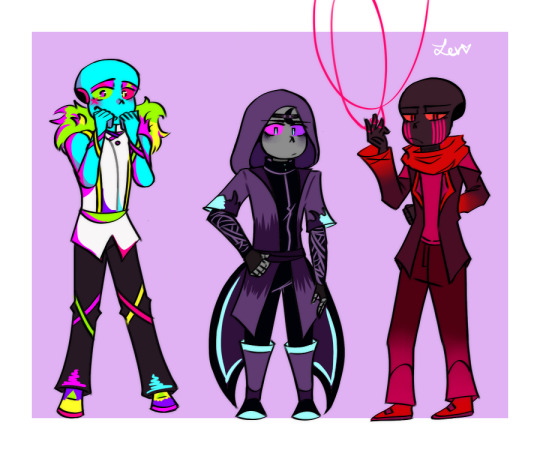
1/2
References for “The Electrospectums” :))
UV, Gamma, and Infrared! All these characters belong in Orphicverse, a multiverse where different styles are presented and balance is a key factor.
.
.
(all of the character info below the cut)
Ultraviolet (DT Variant)
Nickname - Violet // UV
Personality - Slightly creepy and crazy at times. But upon first glance they come off as calm and cool. The more comfortable he is the more chaotic they get lol. They enjoy people’s company and like to be alone at the same time.
Sexuality - Bisexual // Genderless // Goes by He/They Pronouns
Height - 5’7
Clothing Style - Dark // Black, Gray and Eccentric Purple my beloveds // Horror Genre
Voice Info - Tenor
Theme Song (song that fits their vibe) - Sweet Or Sour // Masquerade // You Should See Me in A Crown // Wannabe (why mona ver)
Age - 415
Weakness - Any mention of the experiments put on them he will freeze up // Heights of course
Fear - Acrophobia // fear of heights
Weapon - Staff // Tentacles
Likes // Passions & Talents - He can play the triangle :) // He likes hanging out with his crew yet he would never admit it. // Flirting with Gamma and Empyrean >:) // Powdered Milk // Blasting Music
Dislikes - ew soy milk // Distrustful people and people who just think he's evil // I hate my friends but if you make fun of them I will kill u ^^ energy // Any kind of magic imbalance
Other - Violet comes from the same facility that Empyrean came from as mentioned before. Their name is Ultraviolet, they just go by UV. UV’s journey was very interesting because it involved looking in the darkest places to find friends. More specifically, a void. An antivoid. Where he met the god of destruction, Gamma. Sparing the details but they fought a really powerful battle that just ended with them both being too tired to stand. When UV assures him he is no threat. They talk reasonably now. Violet tells him about their numerous experiences of traveling (not about his experimental past-) and then they both come to a respective truce. UV asks whether or not Gamma wanted to join him and so he just “reluctantly” agrees and bam. // To another void Violet went. This time finding a very eccentric person. His name being Infrared. He looked lost, probably lost. Until he saw UV. Then he just lit up and started talking all about his wish to gain a friend, or for someone to magically find him. Violet saw it as a sign that maybe I should add another person to my little friend group cause this guy seems like he needs help. They eventually get called “The Electrospectums” which might sound weird at first but if ya know science then :))))) Currently they live in a rent free building that Infrared helped build along with UV’s dark magic and they all live peacefully. Till its time to kill for good >:)
-
Infrared (Cross)
Nickname - Fred mmm
Personality - His memory and motives are always hard to distinguish. But in all, he is very hyper and outgoing. Eccentric at best, and always wants to do the most chaotic shit. Will call you out on anything dumb you’ve done :)
Sexuality - Greysexual
Height - 6’2
Clothing Style - Vivid Colors // Black and White dashed on there as well // Neon my eyes are ded
Voice Info - Baritone
Theme Song (song that fits their vibe) - Stamp On The Ground // Thumbs // BZRK // Brooklyn Bloodpop // Any Chaotic Song
Age - 26
Weakness - No thoughts head empty // He can be slain // His fear of being alone ig
Fear - Autophobia // The fear of being alone
Weapon - Large Knife that can spawn the weirdest shit // Shapeshifter
Likes // Passions & Talents- He plays the kazoo, and is godly at it // Being hyper and shaking other people aggressively // hA gaAAaaAyyyy-
Dislikes - Being alone // Jinx makes him feel uneasy // Kill any Electrospectum members you will have someone in the shadows watching you //
Other - He started off in his regular universe till an infectious spell spread upon the world and he was affected. It was done by someone who looked like Jinx (but it wasn’t actually Jinx it was a fucked up Ink from a different timeline-) So being affected by the spell he shifted into that Ink’s form and jumped into multiple portals trying to find a place he could stay. Because his universe was just getting all fucked up due to the spell and if he stayed any longer he would lose his sanity. He eventually found a dangerous and dark white void that he stayed at for what felt like years staring at the white emptiness; trying to not make that spell take over him // eventually losing his memories and becoming a blank slate. Then UV found him and took him in. He started to gain all sorts of feelings and hyperness that he had never felt before. He just...acts all positive but could be planning something. His colors are also incredibly bright because of the spell that was cast. He does not remember anything about how his universe died, or even the fact that he was put under a spell.
-
Gamma (Error)
Nickname - gAmmA raaAy
Personality - Bitchy. Really mean but kinda less like a five year old ??? He can actually speak rationally and just destroys and kills for fun, he likes the adrenaline. Infrared annoys him but he kinda secretly likes UV. He hates Empyrean and Jinx though :))
Sexuality - Bisexual
Height - 6’0
Clothing Style - Why does he kinda dress like a rapper ??? // Jackets // Edgy Vibe // f you, i look cool
Voice Info - Baritone
Theme Song (song that fits their vibe) - Gambino // Hot GIrl Bummer // Make Me Wanna Die // My Demons //
Age - 28
Weakness - He’s really emotionally unstable tbh //
Fear - Claustrophobia // fear of confined or crowded spaces
Weapon - Guns & Bright Pink Strings
Likes // Passions & Talents - Likes being hot /j // He plays the electric guitar because yes // He likes to fight if that is a thing :) // Keeps some souls in his collection // His comfort home & soap operas
Dislikes - ew jinx // angy man >:( // he doesn’t like tight spaces // Doesn’t like anyone until they make a good impression on him.
Other - He just is the destroyer and lives in the anti-void. Until he decided to take something called a “power vial” which is exactly what it sounds like. It makes you stronger. He wanted to gain more power so he took one and then all sorts of things happened. His appearance changed almost completely and his color scheme is now warm. It also changed his mindset a bit, and it helped him adapt to a more mature person. He still hates most people who he thinks suck and just happens to include all of The Celestial Beings except Hiraeth. He knows Hira because Hira often visited the Anti-Void along with Jinx, she was very nice to him ^^. (They watch soap operas together on Sundays :3) He joined The Electrospectrums out of curiosity and boredom as mentioned before; and is the second braincell in the group. Emotions do get the better of him sometimes, but it all gets resolved.
#levenxa draws#orphicverse#orphicverse! ultraviolet#orphicverse! error#orphicverse! cross#error sans#cross sans#dreamtale variant#undertale au#undertale multiverse#utmv#utmv au#opv! error#opv! nightmare#opv! cross#error#cross#errortale error#xtale cross#utmv fanart#wow I am not used to tagging these things 😳#but woooo#i did it I made something utmv related :)#will edit if i need to add something later#eyestrain#tw // eyestrain#oop need that for infrared-
55 notes
·
View notes
Text
New Ideas Into Kenya Visa Never Before Revealed
Top Kenya Visa Secrets
https://de.ivisa.com/kenya-visa
Although there are many fees that simply can't be avoided, here are a couple of recommendations to help spend less on an African safari. When the account is made and verified, you must begin a new application for a Kenyan visa. The payment card will enable Boda Boda operators to cultivate their business whilst reducing the expenses connected with handling cash.
Kenya Visa - the Conspiracy
Visa applicants in the uk and Northern Ireland will not have any need to stop by the High Commission to complete a shape and get it processed. Kenya Immigration Services Limited, we offer the e-Visa services for those who need to go to Kenya. Kenya Bus Service and Citi Hoppa buses also offer transportation in the vicinity of Nairobi.
To start with you'll have to start out with selection the needed type of permanent permit. The company letter should incorporate an introduction of the applicant, the kind of the business which will be run on the trip, and state the kind of visa and preferred validity length. Accordingly, you might find that it's not crucial to request an expedited appointment since there are regular dates out there.
Kenya Visa - Overview
Yes, it's essential for your kid to get OPV to boost gut immunity. You have to offer evidence of exceptional conditions. All candidates should have a distinctive form.
You do not need to go to Kenya to delight in the fabulous taste because Kenyan coffee can be bought from several big establishments, together with online grocery stores. While on safari, make certain you have some method of guarding your camera from the dust. Ultimately, take many photos so you are going to have no less than a few to pick from.
Most Noticeable Kenya Visa
It is essential that you do so immediately upon making the choice to travel, and that you be sure your visa doesn't expire during your trip. Your travel has to be imminent to get qualified for an expedited appointment. Non-US citizens may submit an application for business visas valid for up to a year.
Incomplete and rejected application procedure is likely because of absence of payment. Kindly make sure that the application forms are appropriately signed and dated. As soon as your application is approved it is going to be sent via email.
Splurge or not, Kenya is an extraordinary country with a wide range of activities, cultures and lovely sites to provide all travelers. It enjoys a healthy and invigorating climate. It is not the cheapest money travel destination in the world.
There is likewise an opportunity to receive a lengthy stay South Africa visitor visa, that enables you to reside in the nation for three decades. The nation, which is frequently called all of Africa in 1 country, has everything conceivable. Please be aware that when you don't have a number of the requirements listed previously won't be permitted into Kenya.
Whispered Kenya Visa Secrets
There are a lot of African countries whose citizens do not need a visa to enter Kenya. No, US citizens do not demand ETAs or visas to go to Canada. In the event that you were unable to acquire a visa prior to arrival in Kenya, there's still a chance to acquire a visa on arrival.
Nationals of Cyprus and Romania, who don't expect a visa. Citizens of USA and several other nations do not need visas to enter Hong Kong. How long you plan to stay in Australia 2.
Lodging an online is a fast and cost-effective way of requesting an Australian visa. International Travel Visas (GTV) is pleased to provide its professional services to ease the processing of a large assortment of visas for the worldwide traveler, along with the management of consular affairs necessary to complete cross-border business transactions. The Government of Kenya won't be accountable for any loss of revenue and unnecessary additional expenditure incurred through that site.
All applicants should have a passport irrespective of age. For more in depth information refer to the appropriate subclass visa pages about how to apply. Travelers wishing to import a firearm must get a permit.
1 note
·
View note
Text
Solar cells with 30-year lifetimes for power-generating windows
Transmission electron microscope (TEM) image of a cross-sectional slice of an OPV with the added layers of material (IC-SAM and C70) between the organic material and the external buffers, after the material was subjected to high intensity light to replicate an estimated age of 30 years. It reveals an intact organic active region with no breakdown at the edges. Credit: Kan Ding, University of Michigan
A new transparency-friendly solar cell design could marry high efficiencies with 30-year estimated lifetimes, research led by the University of Michigan has shown. It may pave the way for windows that also provide solar power.
“Solar energy is about the cheapest form of energy that mankind has ever produced since the industrial revolution,” said Stephen Forrest, the Peter A. Franken Distinguished University Professor of Electrical Engineering, who led the research. “With these devices used on windows, your building becomes a power plant.”
While silicon remains king for solar panel efficiency, it isn’t transparent. For window-friendly solar panels, researchers have been exploring organic—or carbon-based—materials. The challenge for Forrest’s team was how to prevent very efficient organic light-converting materials from degrading quickly during use.
The strength and the weakness of these materials lie in the molecules that transfer the photogenerated electrons to the electrodes, the entrance points to the circuit that either uses or stores the solar power. These materials are known generally as “non-fullerene acceptors” to set them apart from the more robust but less efficient “fullerene acceptors” made of nanoscale carbon mesh. Solar cells made with non-fullerene acceptors that incorporate sulfur can achieve silicon-rivaling efficiencies of 18%, but they do not last as long.
The team, including researchers at North Carolina State University and Tianjin University and Zhejiang University in China, set out to change that. In their experiments, they showed that without protecting the sunlight-converting material, the efficiency fell to less than 40% of its initial value within 12 weeks under the equivalent of 1 sun’s illumination.
“Non-fullerene acceptors cause very high efficiency, but contain weak bonds that easily dissociate under high energy photons, especially the UV [ultraviolet] photons common in sunlight,” said Yongxi Li, U-M assistant research scientist in electrical engineering and computer science and first author of the paper in Nature Communications.
By studying the nature of the degradation in those unprotected solar cells, the team recognized that they only needed shoring up in a few places. First, they’d need to block out that UV light. For that, they added a layer of zinc oxide—a common sunscreen ingredient—on the sun-facing side of the glass.
A thinner zinc oxide layer next to the light absorbing region helps conduct the solar-generated electrons to the electrode. Unfortunately, it also breaks down the fragile light absorber, so the team added a layer of a carbon-based material called IC-SAM as a buffer.
In addition, the electrode that draws positively-charged “holes”—essentially spaces vacated by electrons—into the circuit can also react with the light absorber. To protect that flank, they added another buffer layer, this one a fullerene shaped like a soccer ball.
The team then tested their new defenses under different intensities of simulated sunlight, from the typical 1 sun up to the light of 27 suns, and temperatures up to 150 degrees Fahrenheit. By studying how the performance degraded under these conditions, the team extrapolated that the solar cells would still be running at 80% efficiency after 30 years.
Forrest sees a future of these devices “coming to a window near you.” His team has already increased the transparency of the module to 40%. They believe they can approach 60% transparency.
They’re also working on bumping up the efficiency from the 10% achieved in the reported semitransparent modules, closer to the 15% believed to be possible at high transparency. Because the materials can be prepared as liquids, the manufacturing costs are expected to be relatively low.
Transparent solar panels for windows hit record 8% efficiency
More information:
Yongxi Li et al, Non-fullerene acceptor organic photovoltaics with intrinsic operational lifetimes over 30 years, Nature Communications (2021). DOI: 10.1038/s41467-021-25718-w
Provided by
University of Michigan
Citation:
Solar cells with 30-year lifetimes for power-generating windows (2021, September 14)
retrieved 14 September 2021
from https://techxplore.com/news/2021-09-solar-cells-year-lifetimes-power-generating.html
This document is subject to copyright. Apart from any fair dealing for the purpose of private study or research, no
part may be reproduced without the written permission. The content is provided for information purposes only.
New post published on: https://livescience.tech/2021/09/14/solar-cells-with-30-year-lifetimes-for-power-generating-windows/
0 notes
Text
High Cost Of Zimbabwe’s Cheap Solar Gear


Spread This NewsChina Dialogue
Agnes Mandishora, 35, was excited about the Chinese solar equipment she’d bought in a Harare shop. She even joked about uprooting her home’s conventional electricity cables and relying entirely on solar-powered lights. But to her dismay she soon found the lamps and batteries to be “defective and impossible to return”.
As with many Zimbabweans, Mandishora was persuaded to buy solar gear partly by the terrible drought of 2019. The majority of Zimbabwe’s energy is provided by hydropower, so drought can lead to blackouts. “Electricity would be off for over 12 hours each day,” Mandishora said. “At month-end, our power bills were US$60 for essentially staying in dark.”
Households relied on candlelight and factories worked at night when the electricity was switched back on for a few hours. Water levels feeding Zimbabwe’s largest hydropower plant on Lake Kariba were so low that the country could generate just 50% of its peak demand.
Ageing coal power plants kept breaking down, adding to the misery. But solar equipment sellers saw opportunity. They launched sales drives on WhatsApp, street shows and radio slots, promising a magical 23 hours of daily power derived from solar photovoltaic panels that could charge batteries in just four hours.
Zimbabwe’s power shortages are not only the product of drought. They follow years of inadequate investment in the electricity grid, further aggravated by debts to South African power supplier Eskom, and a growing urban population.
In September 2019, the central government approved 39 solar power projects with a total generating capacity of 1,151 MW. Then, in May 2020, Zimbabwe’s state power corporation invited bids for an additional 500 MW. The government also tried to encourage independent power producers to feed their solar power into the national grid.
But the country continues to suffer from chronic power undersupply. Figures for 2020 and 2021 are not yet available, but in 2019, the average annual electricity supply was about 1 400MW to meet a peak demand of 1,700MW, according to the Ministry of Energy and Power Development.
Access to electricity in rural areas is as low as 21%, with 63.5% of all households in Zimbabwe dependent on wood for cooking.
Given the amount of sunshine Zimbabwe receives, it should be able to provide its people with the electricity they need.
Sunshine galore
Zimbabwe is a sunshine-rich country, enjoying a remarkable 7.5 hours of sunlight a day. Solar radiation varies from an average of about 16 MJ/m2/day in winter to about 22 MJ/m2/day in midsummer. Out of a total area of 390,750 km2, the country has 250,000 km2 that is suitable for concentrating solar power plants.
Government policy is already shifting towards solar energy with a ban, announced in November 2019, on electric water heaters in new domestic and commercial buildings, and the mandatory use of solar water heaters. This is likely to stimulate a huge market for “solar geysers”, as they are known locally.
Ordinary people have also been seeking alternatives themselves, in the face of long waits to receive electricity in rural and newer townships. By the end of 2019, more than 100,000 homes across the country had solar power systems installed, according to the country’s energy ministry. Many more homes were powered by solar but not recorded as such.
Faulty solar gadgets
Solar equipment made in China, including batteries, photovoltaic panels, cables and inverters, have become popular in Zimbabwe due to their relatively low price. Such equipment, entering either lawfully or via smugglers, makes up the majority of Zimbabwe’s energy equipment retail market, according to Tawanda Chitiyo, the founder of renewable energy start-up Tawanda Energy. However, the equipment is often substandard and promoted by false claims. And much of it ends up in unregulated urban dumps.
Zimbabwe receives so many faulty foreign gadgets because most consumers can’t afford the new stuff, said Gift Mawache, a geographer in the city of Mutare. Wages in Zimbabwe vary widely. The economy is largely informal, so there is no agreed average figure. But, as a guide, in 2020 the government set the minimum wage for the private sector at US$85 a month.
Skanyi Jongwe, a disgruntled buyer, said: “I forked US$180 for LED solar lamps, cables and a battery. The lamps’ light was faint, barely shined beyond four hours, or became too hot to the risk of exploding. The warranty said 10 years. The reality – just five months.”
“All manufactured electrical solar implements from any country degrade over time. But the rate of failure of Chinese solar panels is now a great concern,” said Tawanda Energy’s Chitiyo. Nigeria, India and Indonesia are also sources of low-quality solar equipment entering Zimbabwe, but much of the equipment is originally manufactured in China.
Redress for disappointed buyers is difficult, explained Chitiyo. “Defects are not immediately apparent to most of the customers. Also, the warranty they offer is very difficult to honour. How can a foreign company in Guangzhou get a return solar shipment from Harare, Zimbabwe?”
It is not only Chinese merchants living in Zimbabwe who stand accused of selling defective solar gadgets. Lots of native Zimbabwe merchants also hawk poor products. As Chitiyo said: “ most of the solar cells are sold in shops owned by Zimbabwean traders and not by the Chinese.”
Smuggling in the mix
Zimbabwe shares porous borders with South Africa, Mozambique, Zambia and Botswana, all avenues for substandard solar devices to enter Zimbabwe, said Dennis Juru, president of the International Cross Border Traders Association in Musina, South Africa, on the border with Zimbabwe.
“Prestigious stuff like Rolls batteries exist in a few trendy shops in Zimbabwe, retailing for something like US$1,300… You can buy batteries in China for half what they sell the same battery for in South Africa. At the end of it all, some merchants sometimes smuggle to Zimbabwe to make more,” Juru said.
At the height of Zimbabwe’s 2019 blackouts, South Africa immigration police would detain buses headed to Zimbabwe carrying hidden solar panels, inverters or mobile phone tower batteries.
An e-waste mountain looms
Smuggling substandard equipment ultimately contributes to Zimbabwe’s waste problem. According to Chitiyo: “Defective solar lanterns and panels are not being properly disposed of in these communities. Most solar panels will end up as toys for the kids to play with.”
“Solar panels are sealed off with glass, most likely the glass will break or get damaged, exposing children and the environment to harmful substances,” he added. Toxic chemicals released from panels may include copper indium selenide, lead and polyvinyl fluoride.
Chitiyo points to Gimboki, a sprawling, informal settlement on the southern outskirts of Mutare.
“Very few if any of the solar lanterns in this community are still functional. How will they be disposed of? It’s anyone’s guess where the panels will end up… I think we already have an environmental and health problem that will grow in the future,” he said.
Future of solar
Zimbabwe is trying to get a grip on solar power generation. In November 2019, the state agency Zimbabwe Energy Regulating Authority (ZERA) announced plans to establish the country’s first solar testing laboratory as a way of checking the solar panels, inverters, batteries or LED lamps coming into the domestic market. ZERA also said it would maintain an online list of genuine solar traders as a guide for consumers.
The solar testing lab has so far not started operating, due to funding problems, a public servant in the energy ministry told China Dialogue on condition of anonymity.
In June last year, Zimbabwe abolished the unpopular custom duty tax on imports of solar gear, leaving in place only the 15% domestic sales tax. Chitiyo said the tax change was likely to do away with smuggling: “There is now no justifiable need for traders to smuggle equipment into Zimbabwe because it is cheap to import solar energy gadgets into the country.”
Importers of solar equipment are very happy about the removal of import taxes. Kuda Moyo, an entrepreneur importing from China, said: “An 8V solar battery and cabling required US$60 upfront. When we used to add tax, the selling price ballooned to $298. We hurt our Zimbabwe customers who are supportive but don’t earn so much.”
Some Chinese sellers are doing things by the book. “Our PV panels, batteries and cables get verified before they ship from China. We insist on manufacturers producing certain quality certificates for us to be able to buy their products and bring them to South Africa and Zimbabwe,” said Selma Gaba, manager for Jinbei Electric, a Chinese solar dealer with shops in downtown Johannesburg and in Zimbabwe. “Substandard gear harms consumers’ trust.”
Zimbabwe’s own solar manufacturing industry is still nascent. Tawanda Energy is taking steps, collaborating with Infinity PV, a Danish corporation, towards producing cheaper “organic photovoltaics” (OPV) locally. OPV systems use carbon-based materials rather than silicon to absorb different wavelengths of light. They are easier to manufacture than PV systems but have the drawback of a shorter lifespan. Chitiyo plans to send his team to Denmark to be trained to produce these solar cells in Zimbabwe.
This may be a suitable model for other developing countries with more sunshine than money or specialist knowledge.
Read the full article
0 notes
Text
It’s not just the spike protein and the mRNA that are a problem. Both Pfizer and Moderna Covid injections also have DNA contamination and Pfizer’s Covid injection contains SV40 promoters.
Microbiologist Kevin McKernan pioneered research on testing some of the covid vaccine vials and discovered unacceptable levels of double-stranded DNA plasmids floating around. This is DNA contamination. He found the contamination in Pfizer and Moderna vials.
During an interview with Peter Sweden, Sasha Latypova said that DNA contamination is “a huge problem because this is replication competent plasmid, it can then invade human cells, it can invade the bacterial cells that live in your gut. So, they go into the bacteria they replicate there, they replicate antibiotic-resistant genes…it can cause sepsis, it can cause cancer, all sorts of issues.”
The World Council for Health (“WCH”) stated that a red line has been crossed. “DNA contamination of mRNA ‘vaccines’ poses a risk to everyone on the planet,” WCH said. “Replicable DNA, so-called plasmids, in both the monovalent and bivalent vaccines, which should not be there at all … We can only speculate how it will end, but what needs to happen today after the publication of the paper by McKernan et al (2023) is an immediate stop of the ‘covid-19 vaccine’ program.”
In Pfizer’s mRNA injection, McKernan also discovered Simian Virus 40 (“SV40”) promoters which are tied to cancer development in humans. He emphasised that the SV40 found is a viral piece, it is not the whole virus. However, it still presents a risk of driving cancer.
SV40 or Simian Virus 40 was the 40th virus found in rhesus monkey kidney cells when these cells were used to make the polio vaccine. This virus contaminated both the inactivated polio vaccine (“IPV”) and the oral or “live” polio vaccine (“OPV”) developed by Dr. Albert Sabin. When it was discovered that SV40 was an animal carcinogen that had found its way into the polio vaccines, a federal law was passed in 1961 that required that no vaccines contain this virus.
Kanekoa The Great tweeted two audio/video transcripts. One of a recent interview with McKernan explaining his discoveries and another of a Japanese professor expressing his concerns about these discoveries. We have republished these transcripts below.
73 notes
·
View notes
Text
DOH says mass immunization in W. Visayas not for Covid-19
#PHnews: DOH says mass immunization in W. Visayas not for Covid-19
ILOILO CITY – The Department of Health Western Visayas Center for Health Development (DOH-WV CHD) clarified on Friday that the ongoing mass immunization in the region is for measles-rubella and polio (MR OPV) and not for the coronavirus disease 2019 (Covid-19).
Dr. Daphynie Teorima, DOH CHD-6 Child Health and National Immunization Program coordinator, in a virtual press conference, clarified after the department received reports of parents mistaking the measles-rubella oral polio vaccine supplemental immunization activity (MR OPV SIA) to the vaccination against the Covid-19.
“The MR OPV SIA campaign aims to vaccinate children aged 0-59 months old. On the other hand, the Covid-19 vaccination will prioritize front-line health workers and indigent senior citizens,” the DOH said in a statement read by Teorima.
The department hopes that parents and guardians would not confuse the MR OPV SIA from the Covid-19 vaccine.
“There are different target populations for these two different campaigns. In the meantime, let us support the measles-rubella and oral polio vaccination,” the statement added.
Western Visayas was able to immunize 21.73 percent of its target population for MR and 21.27 percent for OPV during the first four days of the inoculation campaign.
Of the 660, 406 target children for MR, 143, 488 were vaccinated while 163, 870 of the 770, 279 received the OPV.
All children 0-59 months will be given the bivalent oral polio vaccine while those nine to 59 months will receive supplemental doses of vaccines for measles-rubella regardless of past immunization record.
Supposedly the region aimed to vaccinate 10 percent of the target population during the 10 days intensive phase of the campaign to be able to complete the vaccination on the 10th day.
The remaining weeks could have been dedicated to reaching out to deferred or missed children.
In both antigens, the province of Guimaras posted the highest accomplishment with 26.11 percent and 27.28 percent for MR and OPV, respectively.
Bacolod City, meanwhile, has the lowest accomplishment at 12.31 percent for MR and 11.81 percent for OPV, although it is starting to catch up.
“Guimaras is the smallest among our provinces; it only has five LGUs (local government units) so it is easier for them to finish compared with larger provinces such as Iloilo and Negros Occidental,” she said.
There was a slowdown in Iloilo City that was implemented amid its high accomplishment in the first days.
Teorima said the threat of Covid-19 is still one of the challenges as the lockdown is still in effect in some LGUs, such as in Passi City in Iloilo.
Other health workers have to cross an overflowing river, such as in Sara, Iloilo, just to bring the vaccines to far-flung places.
“They risked their lives because they know the significance of this activity for children,” she said.
Nonetheless, she said the accomplishment is also a litmus test for the Covid-19 vaccination campaign.
With this, she said that they would know how to implement vaccination at this time of the pandemic. (PNA)
***
References:
* Philippine News Agency. "DOH says mass immunization in W. Visayas not for Covid-19." Philippine News Agency. https://www.pna.gov.ph/articles/1129756 (accessed February 06, 2021 at 12:02AM UTC+14).
* Philippine News Agency. "DOH says mass immunization in W. Visayas not for Covid-19." Archive Today. https://archive.ph/?run=1&url=https://www.pna.gov.ph/articles/1129756 (archived).
0 notes
Text
CI flexo & Gelflex eBeam curable inks at the heart of a new process
On 28 July 2020, we took part in an exciting webinar organized by four companies working together on an exciting technology for recyclable flexible packaging that could be safer, healthier, and cost-effective enough to make it a reality. These four are respectively, suppliers of blown film lines, CI flexo presses, inks, and electron beam curing systems.
The explanation of the new recyclable packaging concept began with Mohamed Timol of Reifenhauser, who spoke about new recyclable PE and paper structures. Jordi Puig from Comexi spoke about the special Gelflex technology eBeam curing CI flexo press, which also works for conventional and water-based inks. Evan Benbow of WikoffColor explained what the gel-based eBeam curable inks and coatings are and how they work. He described the attributes and properties that make them bright, scuff-resistant, and easy to de-ink for lateral recycling printed packaging. Lastly, Imtiaz Rangwalla of Energy Sciences explained the entire process and its benefits and the ebeam curing technology.
The almost two-hour webinar put forward the prospect of creating new film and paper structures with minimal amounts of aluminum or EVOH that meet recycling standards. The webinar then proposed that these be printed and even coated in a specially developed Comexi CI flexo press using Gelflex ebeam curable inks provided by the ink manufacturer WikoffColor in a 7-color extended gamut process. The press and process would also allow an overprint varnish (OPV) to be applied in the last unit and then cured using the single unit end of press ESI eBeam curing system.
All the hardware and consumables change in this new process, although ebeam curing has been used for a long time for curing flexible packaging even in India. In India, it was used on a CI flexo printing press to produce flexible packaging for pet foods. The idea of using eBeam curing was to reduce one layer in the laminate and protect the surface with a coating that would not leave solvent traces.
During the webinar, Jordi Puig of Comexi said that the newly designed press is capable of printing using three types of inks -- solvent-based, water-based, and Gelflex. This will allow printers who invest in the new technology to continue to print on flexible laminates as they are doing now. They can then perform the trials and learning needed to migrate first to water-based and ultimately to the Gelflex-based eBeam curable method.
How does Gelflex-EB curing flexible packaging printing work?
I am taking the liberty to quote liberally from the Energy Sciences explanation of how flexible packaging printing works using Gelflex-EB cured inks and coatings. Unlike traditional inks, with Gelflex-EB, a fully formed polymer is not required. Gelflex-EB technology includes microscopic polymer chains that reduce resistance to flow. Using virtually no solvents, the gel-based technology allows ink to adhere almost instantly to a substrate by way of a covalent bond, resulting in no color bleed.
In its reaction with an e-beam, Gelflex-EB crystallizes and cross-links polymer chains to create a contiguous and homogenous layer of polymerized print. The two-part gel and solvent EB inks have superior physical properties and dot gain, are fluid enough for flexo printing, and thicken rapidly, providing effective ink trapping in the wet state as the solvent evaporates and a gel is formed. Only one EB dryer is required per press, eliminating all inter-station and end-of-press thermal dryers.
The webinar put forward the idea of using six or 7-color extended gamut printing (ECG), a solid white in the first unit (if needed), an overprint varnish in the last print unit, and using just one eBeam dryer to achieve significant cost savings. Starting with the use of a single polymer structure stretched to enhance its mechanical properties and using ECG printing and an OPV with eBeam curing, more easily recyclable packaging can be economically produced. The lower energy costs of eBeam curing are also an overall factor.
Electron beam basics
An electron beam processor is a device that accelerates electrons to high energies and projects them into a substrate. Filaments under vacuum emit electrons, and a high-voltage gap accelerates the free electrons. High-energy electrons pass through the window foil and strike the substrate and cause the desired molecular changes in the product.
It was stated in the webinar that because Gelflex-EB Inks contain no photoinitiators, they are completely safe for food packaging. Examples were shown of Nestle and Pepsi packaging that meets Swiss standards for migration and is FDA compliant. EB is one of the most environmentally clean processes, with most inks and coatings containing no VOCs.
This new method takes sustainability as a strict necessity and opportunity. The solution presented involves new approaches to the substrates, inks, coatings, and flexo printing and curing. It is not child’s play to understand all these components, invest in them, and migrate from conventional flexo and gravure to this unique, and dare I say exciting process. However, when the future requires desirable outcomes in the first place rather than the mere mitigation of deficient materials and methods, it becomes necessary for flexible packaging printers to look at this new process.
0 notes
Text
Ecuador's Constant Struggle Against Illegal Fishing
[By Wilder Alejandro Sanchez]
Illegal, unreported and unregulated (IUU) fishing is a constant challenge for Latin American navies, but the recurring presence of large, predatory, extra-regional fishing fleets exacerbates an already problematic situation.
According to Ecuadorian authorities, a fleet of some 340 vessels is operating through a corridor of international waters between Ecuador’s EEZ and the Galapagos Islands. Defense Minister Oswaldo Jarrin has stated that the Ecuadorian government has been aware of the fleet for over a month, as it traveled north from Peru. As of August 7, the Ecuadorian navy has deployed corvette Manabi, with a helicopter aboard, and the coastal patrol boat San Cristobal to monitor the fleet. Additionally a CASA aircraft, assigned to the navy’s air wing, has carried out surveillance operations.
Several vessels have been identified as originating from China, which has prompted some media outlets to generalize it as a “Chinese fishing fleet.” Quito has stated vessels have come from other countries as well, but without specifying which ones. It is well-known that fishing fleets from Japan, South Korea, and Taiwan also operate in the South Pacific, hence it is likely that some vessels come from these nations as well. Given that this is a fleet numbering in the hundreds of vessels, it is likely a mixed bag of nationalities.
How to Defeat IUU Fishing?
When it comes to IUU fishing, this is a problem of “levels” for Latin America. What is meant by this is that the first level focuses on domestic IUU fishing (a vessel fishing within its country’s territorial waters), then at the regional level (ships registered in one country operating in the waters of another country), and finally at the extra-hemispheric level (the presence of extra-regional fishing fleets).
Thus, while the large international fleet close to Ecuador is making global headlines, this is not the sole incident currently taking place in the region. In fact, while eyes are focused on the South Pacific, the Uruguayan Ministry of Defense has reported that a fleet of approximately 19 Brazilian fishing vessels are operating without permission in its territorial waters as well. Uruguayan and Brazilian authorities are discussing this issue. While 19 ships will not be as destructive as 340, the problem is still significant.
A fishing boat of Brazilian origin photographed from a Uruguayan Navy aircraft (Uruguayan Ministry of Defense)
Regional governments, ministries of defense, and navies regularly explain their strategies to combat IUU fishing. Unsurprisingly, much attention is given to greater cooperation between defense ministries and armed services, and to a large extend, this is occurring. For example, the Permanent Commission for the South Pacific (Comisión Permanente del Pacifico Sur), which has Chile, Colombia, Ecuador, and Peru as members, issued a declaration on August 5 calling for greater cooperation and exchange of information to address the presence of international fleets in the region and the dangers of overfishing. The U.S. National Security Council also tweeted its support for Ecuadorian President Lenin Moreno, stating that “the United States stands with President Lenin and our friends and partners in Ecuador against any aggression directed toward their economic and environmental sovereignty.”
As for partnership between navies, this is also taking place. An interesting example occurred in 2018 in the Caribbean when the Royal Bahamas Defence Force (RBDF) chased three fishing vessels for illegally fishing in Bahamian territorial waters. The ships crossed into Cuban waters to escape their pursuers, but Cuban authorities located these ships, apprehended them, and turned them over to the RBDF. This is an important example of international cooperation to combat a crime that respects no borders.
There is also greater reliance on technology, such as satellites, to locate and monitor suspicious vessels, and to figure out their ports of origin, which is what the Ecuadorian government says that it has done. In other words, regional navies and other agencies are making positive announcements, and there are sufficient examples of successful interdictions and international partnerships. But alas, the problem continues.
More Ships, Please
One obvious issue has to do with numbers, namely how many vessels and supporting aircraft can Latin American and Caribbean navies deploy to combat this crime. Regional vessels routinely carry out myriad tasks at sea, including combating IUU fishing, drug trafficking and smuggling, in addition to carrying out search and rescue operations, support operations to coastal communities, in addition to routine patrols and even unconventional missions. While the Ecuadorian navy is monitoring the international fishing fleet, the service reported on July 20 that naval personnel, along with fishermen and representatives from the Ministry of the Environment, freed a whale that got stuck in a fishing net in the Tonchigue area. Vessels also have to be docked to undergo maintenance or upgrades, which can put them out of commission for extended periods of time.
To be fair, Latin American navies are obtaining new equipment that can be utilized to combat IUU fishing. Case in point, Argentina’s newest Offshore Patrol Vessel Bouchard, acquired from France, successfully stopped a Chinese fishing vessel in its territorial waters this past May. Similarly, Peru recently launched two new domestically manufactured OPVs, Río Tumbes and Río Locumba, which will be very helpful for combating maritime crimes.
As for Ecuador, a noteworthy development occurred recently. In late July the Ecuadorian navy commissioned a new support vessel, BAE Hualcopo. What is remarkable about Hualcopo is its background: the vessel used to be known as Fu Yuan Yu Leng 999, and it was detained in 2017 by Ecuador for operating without authorization by the Galapagos Islands as part of a large Chinese fishing fleet. Upon inspection, authorities found aboard the vessel around 300 tons of fish, including endangered sharks. In 2019, as part of a lengthy legal process, Ecuador’s judicial system ruled that the vessel was permanently forfeited, and it was eventually transferred to the navy. Now Hualcopo will carry out support operations for the Ecuadorian navy and may very well be involved in stopping the same IUU fishing activities that it carried out in its previous life.
Hualcopo raises an important issue, namely the fate of vessels that are seized as part of the war against IUU fishing. Personally, this author has not heard of other navies gaining control of vessels detained for IUU, hence Hualcopo may set an interesting precedent. Certainly some detained vessels may be too old or incompatible with a navy’s requirements and operations, but others could be given a second life, particularly large ships that can be utilized for transportation.
Final Thoughts
Regional navies have enjoyed plenty of successes, and many are upgrading and expanding their fleets, even by re-purposing a one-time fishing vessel, namely Ecuador’s Hualcopo. However, the sheer size of some of these fleets engaging in IUU fishing dwarfs most regional and global navies. For example, while a fleet of 19 Brazilian vessels is not as large as a fleet of 340, it is sizeable enough to be a challenge for the Uruguayan navy, which is known for its aging fleet.
The international fishing fleet currently operating close to Ecuador’s territorial waters will certainly not be the last. Because of their maritime biodiversity and limited naval and aerial platforms, Latin American and Caribbean waters will remain viable arenas for IUU fishing.
Wilder Alejandro Sánchez is an analyst who focuses on international security and geopolitics. The views expressed in this article belong the author alone and do not necessarily reflect those of any institutions with which the author is associated. This article appears courtesy of CIMSEC and may be found in its original form here.
from Storage Containers https://www.maritime-executive.com/article/ecuador-s-constant-struggle-against-illegal-fishing
via http://www.rssmix.com/
0 notes
Note
Hello!I found this au and i think this multiverse is SO cool!But now i have a question:The characters like Dream,Nightmare and the others are humans in the au or they are skeletons?
Thank you so much :D And actually, they could be both!
Before I made the skeleton references I made human designs :)
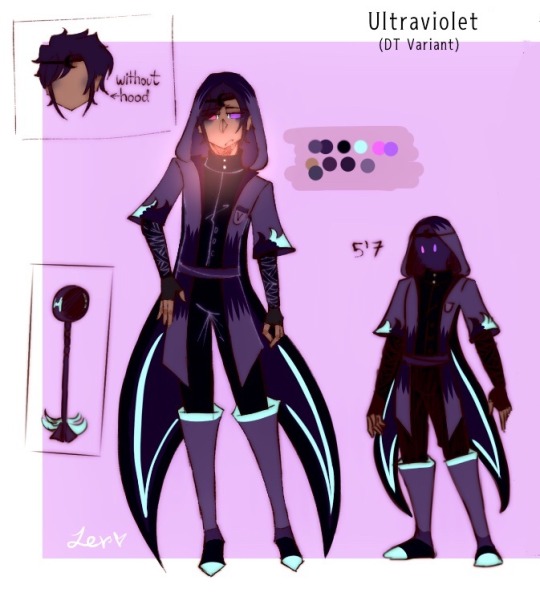
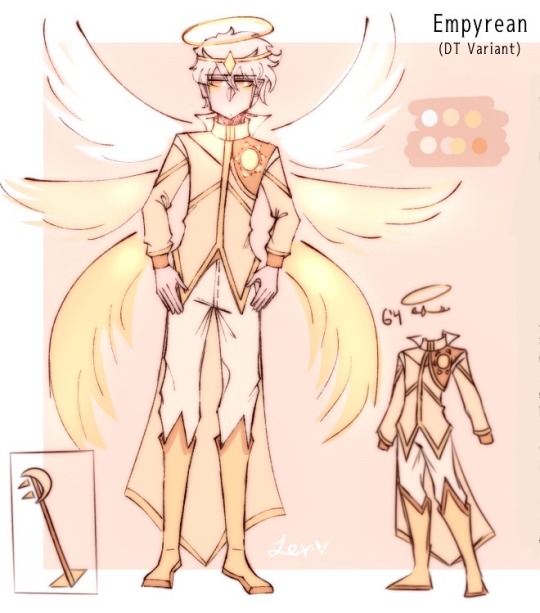
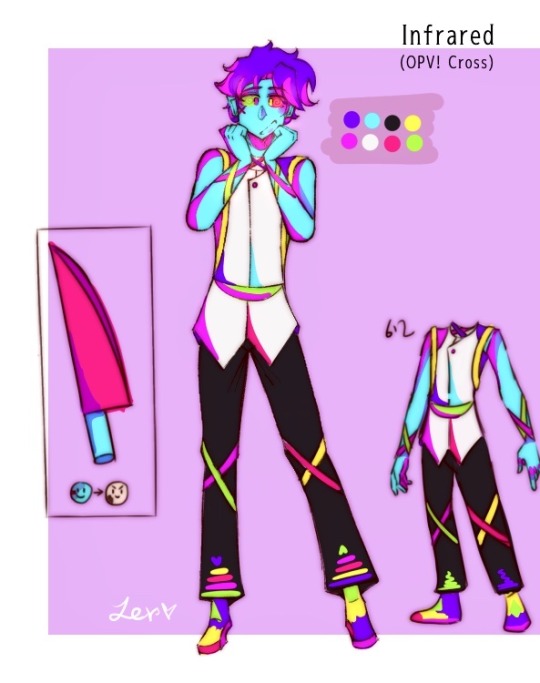



So here they are if you wish to draw them as humans!
#finally an excuse to post the human designs I worked 12 hours on 😩✊#levenxa draws#lev answers#levenxa says#orphicverse! ultraviolet#orphicverse#orphicverse! empyrean#orphicverse! ink#orphicverse! blue#orphicverse! cross#orphicverse! error#opv! blue#opv! ink#opv! dream#opv! cross#opv! nightmare#opv! error#orphicverse refs 2#human designs
29 notes
·
View notes
Text
Will the Type 26 frigates be based in Devonport?
On 6th June, MP for Plymouth Sutton and Devonport, Luke Pollard opened a Westminster Hall Parliamentary debate on the base-porting of Type 26 frigates. A cloud of uncertainty hangs over the future of Devonport and the MoD is under pressure to make an early decision on the basing arrangements for the Type 26 and Type 31 frigates.
In an earlier article, we looked at the overall issues that Devonport faces. Uncertainty over the amphibious fleet, a reduction in Royal Marine numbers and the end of submarine basing increases the pressure for frigates to be homeported in Plymouth.
Earlier this year it was announced the base-porting of the Type 23 frigates would be rationalised so that the 8 ships fitted with the towed array sonar tail will all be Devonport based. Those that have a crew gym in the space where the towed array should be, and referred to as general purpose, will be Portsmouth-based. Making Devonport the centre of ASW excellence makes sense and would point to the 8 specialist Type 26 ASW ships replacing the Type 23s in Devonport.
Portsmouth’s future is very much more certain as the home to two large aircraft carriers, the 6 Type 45 destroyers and the 5 new OPVs. On the debit side, HMS Protector moved from Portsmouth to be a Devonport based ship in 2016 (but as she spends several years away at a time this is of limited benefit to Plymouth). The rationalisation of the Type 23s will also see Devonport gain one frigate at Portsmouth’s expense. There remains an unpleasant possibility that this balance could be upset by the Modernising Defence Review, if the RN is forced to axe a couple of Type 23s in order to keep other assets.
There is no doubt that the Plymouth has suffered a big reduction in the size of its defence estate and in personnel numbers over the last 20 years, on an even greater scale than Portsmouth. The 5 GP Type 23s that will soon all be Portsmouth-based will go out of service first and are the first Type 31s are supposed to be available ahead of the first Type 26s. Basing the Type 31s in Portsmouth seems like the obvious choice and would approximately preserve the status quo. The projected fleet operating doctrine suggests that one or more of the Type 31s are likely to be permanently forward-deployed more often than the Type 26 so would spend much less time in their home port.
Luke Pollard was joined by other MPs from the Plymouth area; Gary Streeter, Johnny Mercer and Kevin Foster. There is strong cross-party support making the case for Devonport’s future. Valid points were made about the suitability of Devonport with good access to the Atlantic and decades of investment in infrastructure and facilities. As well as the civilian jobs, many naval personnel (and ex-naval personnel) and their families live in the Plymouth area, contributing to the economy and social fabric of a region that suffers from being distant from the economic driver of the South East.
The debate raised issues specific to Plymouth but the needs of the navy should be paramount and balanced with the view from Portsmouth. Luke Pollard argues the case for the Navy with greater clarity and understanding than the majority of MPs but over-stated his case by demanding “We need a commitment to make all the Type 26s and the Type 31s Devonport based as well”. While he may be entitled to fight for his constituents, the decisions must be made in the context of the needs of the whole surface fleet. Former Portsmouth City Council Leader, Donna Jones has made similar sweeping demands in the past calling for all 13 frigates to be based in the city. It was rather surprising that no Portsmouth MPs managed to attend the debate while a few Scottish and DUP MPs with an interest in defence were present.
The support conundrum
The Type 26 is very much a BAE Systems’ product and they are likely to win the contract to support the ships in service. BAES have a considerable presence in Portsmouth where they support the surface fleet there and it would suit them to have the Type 26 in Portsmouth. Babcock own the dockyard at Devonport (as opposed to the Naval Base area which is MoD-owned) and are rivals to BAES in many areas of the UK defence business. Should the Type 26s be based in Devonport, either the support contract would have to go to Babcock or BAES would need to establish its own facilities in the Dockyard. The Type 31 competition currently hangs in the balance but it is quite possible that these frigates could be Babcock products which would dovetail nicely with their support facilities in Plymouth. It may appear that Type 26 is a natural fit for Devonport with the Type 31 home-ported in Portsmouth but the arrangements for supporting these vessels in service may add complications.
The minister responds
Guto Bebb, Minister for Defence Procurement, was on hand to answer some of the questions raised. Most surprisingly, he said something his boss the Defence Secretary has resolutely refused to say until now. Responding to another question about the future of the LPDs, rather irritably he said: “The honourable gentleman should be aware that HMS Albion and HMS Bulwark are safe until 2033 and 2034 – that’s the decommissioning dates for both vessels.” If this was not a major gaffe then he has pre-empted the results of the MDP and confirmed these ships are safe from cuts. Such a statement was so unexpected that it has not yet been widely reported in the media – perhaps some are reluctant to believe it.
Guto was fulsome in his praise for the passion of the Plymouth MPs and, very encouragingly has promised that a decision on the future of the Type 26 basing will be made before the end of 2018. This should at least help Plymouth make plans for its future economy. It should be remembered that the needlessly extended Type 26 construction programme will not see HMS Glasgow in the water until 2025 and be arriving in her homeport for the first time in late 2026.
Sadly the Minister also repeated the falsehood that everyone hoped had passed out of use when Michael Fallon and Harriet Baldwin moved on. “We have a growing Royal Navy for the first time in decades” he claimed. By any measure, this is patently not true. He is right to point to a major new equipment plan and that the defence budget is rising by 0.5% above inflation. Unfortunately, the equipment plan is around £20Bn short and defence inflation runs well above the main inflation rate. Despite new construction, the number of vessels in the RN service is declining and there are considerable gaps in equipment and capabilities.
Luke Pollard should be commended for securing this debate and doing much to highlight the plight of the navy. All things considered, it would be something of a surprise if the Type 26 frigates are not Devonport-based. Any other decision would probably seal the fate of the naval base, a disaster for the RN and the resulting fall-out would be political dynamite.
youtube
Video of the June 6th Westminster Hall debate – Base-porting of Type 26 frigates
Related articles
Pressure mounts on Labour MP to back Type 26s being based in Portsmouth
(Portsmouth News)
Defence minister says HMS Albion and HMS Bulwark ‘are safe’ (Plymouth Herald)
from Save the Royal Navy https://www.savetheroyalnavy.org/will-the-type-26-frigates-be-based-in-devonport/
0 notes